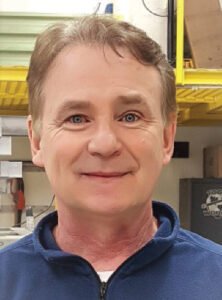1. When did Tempeff start up and what exactly does it do?
The company was started in March of 2008 however the basic technology goes back even farther, approximately 35 years. Our DualCore® energy recovery system can reach up to 90% sensible heat recovery without the requirement of an energy robbing defrost strategy even when the outside air temperature reaches -40°F. The equipment is customizable, allowing engineers and owners the opportunity to utilize its efficiency and flexibility to bring down over all energy consumption.
2. Why do you say that your energy recovery equipment has the highest efficiency available?
Most heat recovery ventilators use a single core system which can freeze when outside temperatures drop below freezing. The system is then required to implement a defrost strategy which will bring down efficiency and increase energy consumption. Having to incorporate a defrost strategy means that the heating system has to be designed to handle the full heating load which adds additional system cost and reduces overall efficiency. Using a proven DualCore® system that will not require a defrost strategy allows the system designer to size any additional heat from supply air temperature off the Tempeff unit, reducing energy consumption as well as system cost.
3. How does the DualCore® system work?
Our DualCore® design uses two heat exchangers, compared to the single exchanger in conventional units. Outside air goes through one exchanger for one minute at a time before switching to the other exchanger, so it doesn’t have time to build up frost. In winter, condensation will form on the exhausting heat exchanger. When the cycle changes, the outdoor air is passed over the heat exchanger, warms up, and that moisture is added back to the airstream. This reduces the need for added humidity in the conditioned space. The result is that one heat exchanger is always delivering conditioned air to the space.
4. What is the performance record?
Our system has been tested in a climactic chamber at the National Research Council which replicated indoor and outdoor temperatures and relative humidities designed for Artic conditions. The unit functioned well with sustained outside temperatures of -35°C and 50% RH. There was no restriction of airflow or blockage of the air stream so that the ERV continuously provided conditioned outdoor air. With few moving parts, maintenance of the system is very low. Due to the cycling nature of the heat exchangers, dust rarely builds up on them, eliminating the need for frequent cleaning. Numerous LEED-certified and high-performance buildings, such as the Fort St. John Passive House published in the Summer 2020 issue of SABMag, use Tempeff DualCore® ERVs.
5. What’s on the horizon for Tempeff?
Covid-19 has placed focus on the requirement for increased ventilation. In some cases having a centralized system may not be the best answer in multi-functional spaces or in retro-fit applications where space is at a premium. To address this concern, Tempeff has launched the RGSP-K, a new configurable ERV utilizing DualCore® energy recovery for smaller airflows at a friendly price point. This equipment is capable of up to 90% sensible heat recovery without a defrost strategy. This new format can be ceiling mounted and configured in many different ways to suit tight and challenging project conditions.

